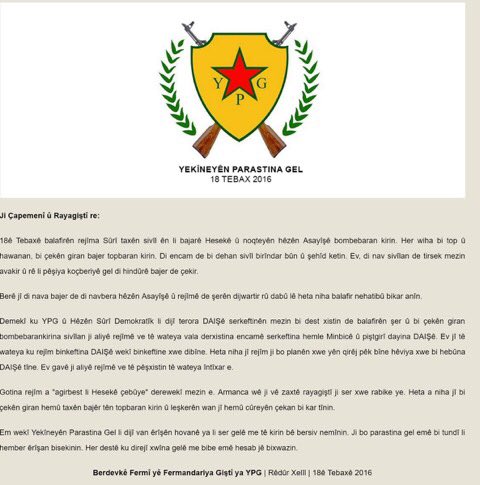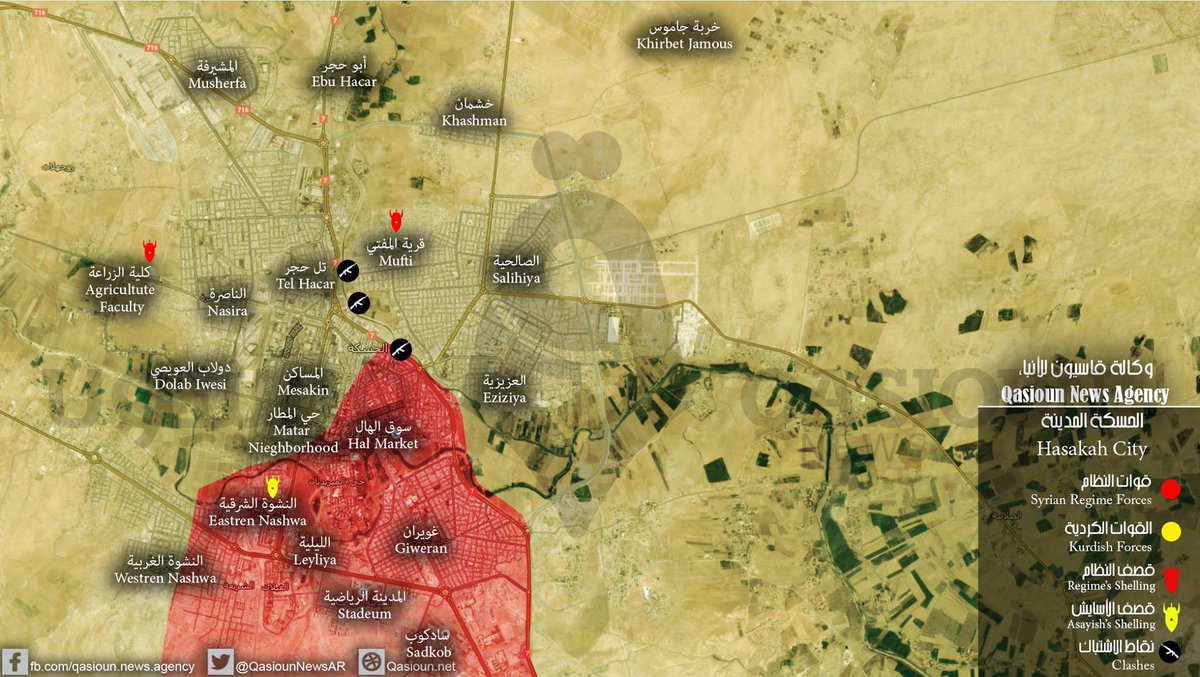The relations between the Syrian government and the Syrian Kurdish Democratic Union Party (PYD) have never been very good. However, the shaky neutrality between the Kurdish police (Asayish) linked with the PYD and the National Defense Forces (NDF) loyal to the Syrian government in the eastern Syrian city of Al-Hasaka turned into fierce clashes last night.
Today, after a series of street clashes with usage of small arms and RPG rounds, NDF and Asayish commanders have reached a ceasefire agreement which was put into effect in the city. Most likely, the Syrian Arab Air Force air raids [now, it’s confirmed that Syrian warplanes conducted some 12 air strikes, targeting bases and HQs of PYD-linked forces] on Asayish targets in the area played an impotant role in reaching the ceasefire. It also should be noted that a significant number of Arab fighters from the US-backed Syrian Democratic Forces (where PYD-linked forces dominate) deffected to the pro-government NDF during the clashes.
As result the NDF even gained some ground in the city. If the PYD believed that the US-led coalition could help in the confronation with the pro-government forces, it was wrong.
Despite the ceasefire, the situation between pro-government and pro-PYD forces in the city remains tense. The Russian-backed Syrian army and the US-backed Syrian Democratic Forces (a brand fro PYD-linked Kurdish forces) are the two most powerful forces that oppose terrorists in Syria and tensions between them do not contribute the solution of the ongoing crisis.
UPD 17:00 CET: PYD-linked forces rejected the ceasefiire while the US drone was reported over Al-Hasaka:

For sure, this will not contribute to any US-backed operations against ISIS in Syria because PYD-linked Kurdish units are the core of the so-called “Syrian Democratic Forces.”
Another map of the situation:
Strategic Implications
The main reason of the tensions between the PYD and the Syrian government is the PYD’s will to set an independent state in the whole northern Syria. The move is not supported by majority of Syrian population. Furthermore, the ethnic situation in northern Syria, where Kurds are far away from a significant majority, sets the ground for constant conflicts between the PYD-linked Kurdish forces and the local Arab (and sometimes non-Arab) population. The prolcamation of the so-called “Northern Syria Federation” by the PYD (without any consideration with the Syrian government) has not contributed to stability of the situation.
It’s clear that the solution of the “Kurdish issue” with peaceful means can be found only via diplomatic negotiations on the international level. BUT the PYD main sponsor, the United States, along with Turkey are blocking the involvement of the Kurds in the international negotiations on the Syrian crisis. Furthermore, statements of the Russian Ministry of Foreign affairs that the PYD should be involved in the negotiations remain ignored in Washington.
This situation paves the way for future conflict between the Syrian government forces (if it defeats the “US-backed opposition” consisting of various Islamic radicals) and the US-backed PYD. This situation will contribute to the US intersts in the region because will allow Washignton to turn the public image from “the state that supports terrorists against the Assad government” to “the state that supports the ‘democratic’ Kurdish forces against the Assad government.” The problem that this situation will not contribute to the long-awaited peace in Syria, for sure.








hahahahahaha
BIJI WIJI
It might be a good time for Assad to propose a treaty negotiation, Syria, Iraqi Turkey and Iran grant the Kurdish self governing provinces within their nations. This agreement need not wait for the UN, the Americans, or any outside nations. Clearly those governments can see the US is only going to use the Kurdish Peoples to fragment the situation, rather than really help them. The Kurdish would be invited, and hopefully approve. Russia and China could host.